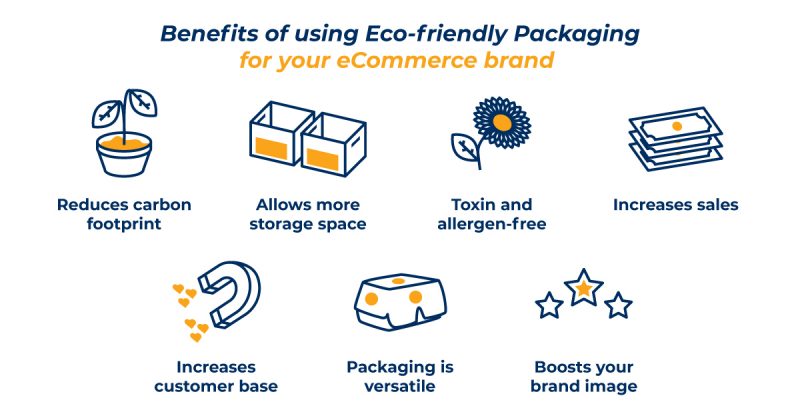Discover Eco-Friendly Product Impact

Imagine a world where every product you use doesn't just serve a purpose but also enlightens the path towards a more sustainable future. Welcome to the world of eco-friendly products. But what does it mean if a product is eco friendly? Is it merely a marketing buzzword, or does it carry a deeper, more profound significance? Let's dive in and explore the essence of eco conscious products and their transformative environmental impact.
Understanding Eco-Friendly Products
When you ask what does it mean if a product is eco friendly?, you're delving into a concept that goes beyond just the material composition. Eco-friendly products are designed to minimize their harm to the environment. This could involve sustainable sourcing of materials, reduced energy consumption during manufacturing, recyclability, and minimal waste.
Think of it like choosing between a glass water bottle and a plastic one. The glass bottle might cost a bit more upfront, but it can be reused hundreds of times, reducing the need for single-use plastics. This simple analogy encapsulates the essence of eco-friendly products—they prioritize long-term sustainability over short-term convenience.
The Environmental Impact of Eco-Friendly Products
Opting for green products can significantly reduce your environmental footprint. But how? Let's break it down.
- Carbon Footprint:
Many eco-friendly products are made from materials that require less energy to produce. For instance, organic cotton requires less water and energy compared to conventional cotton. This reduces the carbon footprint. It's like switching from a diesel car to an electric one—you're choosing a mode of transportation that emits fewer greenhouse gases.
- Waste Reduction:
The concept of a circular economy, where products are designed to be reused or recycled, is integral to eco-friendly products. This minimizes waste that ends up in landfills and oceans, creating a healthier planet. Consider a biodegradable diaper versus a conventional one. The former decomposes naturally, while the latter can take centuries to break down.
- Resource Efficiency:
Sustainable practices ensure that we use our natural resources wisely. Imagine you have a garden where you only take as much water as necessary for your plants to grow. Now, think of an industrial process that uses renewable energy sources like solar or wind power. That's resource efficiency in action.
The Benefits of Choosing Ecolological Products
Choosing eco-friendly products isn't just good for the planet; it's good for you and future generations too. Here's why:
Healthier Living
Many eco-friendly products are made without harmful chemicals, making them safer for you and your family. For example, eco-friendly cleaning products are less likely to cause respiratory issues or skin irritations. Why settle for chemicals that can harm your health when you can opt for natural, non-toxic alternatives?
Supporting Sustainable Businesses
When you buy eco-friendly products, you're voting with your wallet. You're supporting businesses that prioritize sustainability, encouraging more companies to adopt green practices. It's akin to casting a vote in an election—your choice can influence the outcome.
Cost-Efficiency in the Long Run
While eco-friendly products might seem more expensive initially, they often save you money in the long run. Invest in a set of reusable straws instead of buying plastic ones every week. Over time, you'll see these reusable items pay for themselves.
Making the Right Choices
So, how do you ensure that the products you buy are truly eco-friendly? Start by looking for certifications like the Forest Stewardship Council (FSC) for wood products, the Rainforest Alliance for agricultural products, and the Energy Star rating for electronics. These certifications are your assurance that the product meets certain sustainability standards.
Another tip is to do some research. Websites like Greenpeace and NRDC offer valuable insights into eco-friendly products and sustainable practices.
Remember, switching to eco-friendly products is a journey, not a destination. Start with small changes like using reusable bags, switching to LED bulbs, and opting for eco-friendly cleaning supplies. Every step counts!
Conclusion
Discovering what does it mean if a product is eco friendly opens the door to a world of sustainable living. By choosing ecological products, minimizing our environmental impact, and supporting green practices, we can create a healthier planet for ourselves and future generations. So, why wait? Start your journey towards a greener lifestyle today. Click here to explore a wide range of eco-friendly products and make a conscious choice.
FAQs
1. What are the key indicators of an eco-friendly product? Eco-friendly products typically use sustainable materials, reduce waste, minimize energy consumption, and avoid harmful chemicals. Look for certifications from organizations like the FSC or Rainforest Alliance.
2. How can I make my home more eco-friendly? Start with small changes like using energy-efficient appliances, switching to LED bulbs, and opting for eco-friendly cleaning supplies. Consider planting greenery and using recycled materials for decor.
3. Are eco-friendly products more expensive? While the upfront cost might be higher, eco-friendly products often save money in the long run due to their durability and energy efficiency. Think of them as long-term investments.
4. Can eco-friendly products really make a difference? Absolutely. Every eco-friendly choice you make reduces your environmental footprint. Collectively, these choices can lead to significant positive changes for our planet.
5. Where can I find eco-friendly products? Many retailers and online stores offer eco-friendly products. Look for dedicated eco-stores or sections in major retailers. Websites like Green America and Seven Clean Seas provide resources and recommendations for eco-friendly shopping.
```
0 Response to " Discover Eco-Friendly Product Impact"
Post a Comment